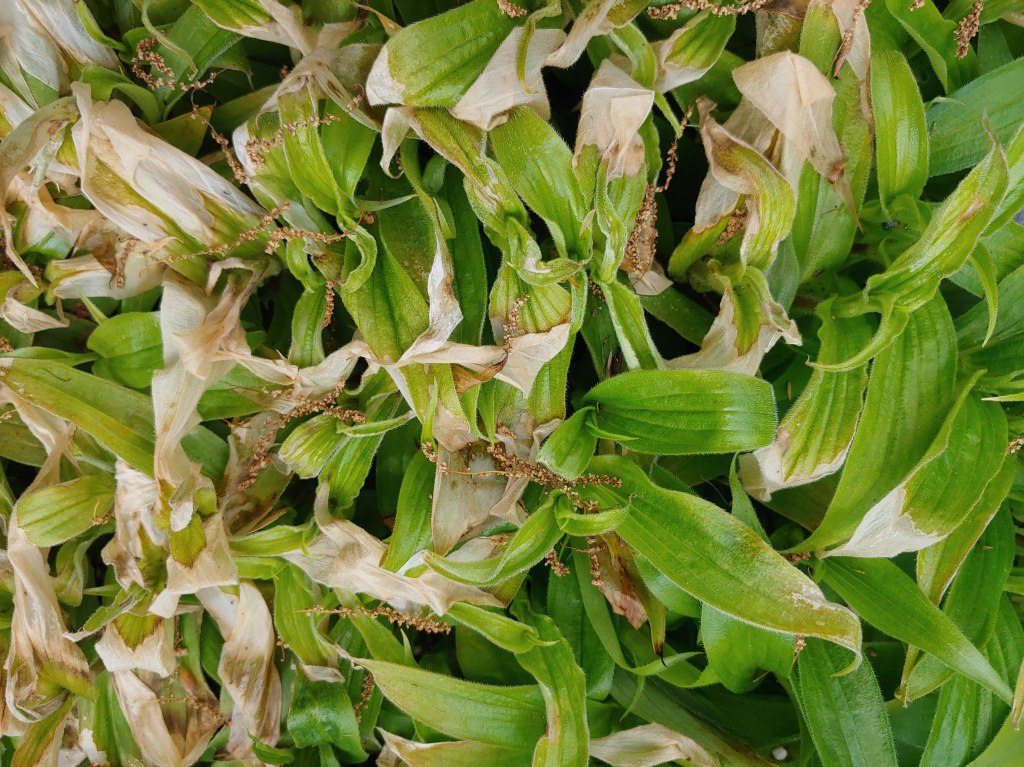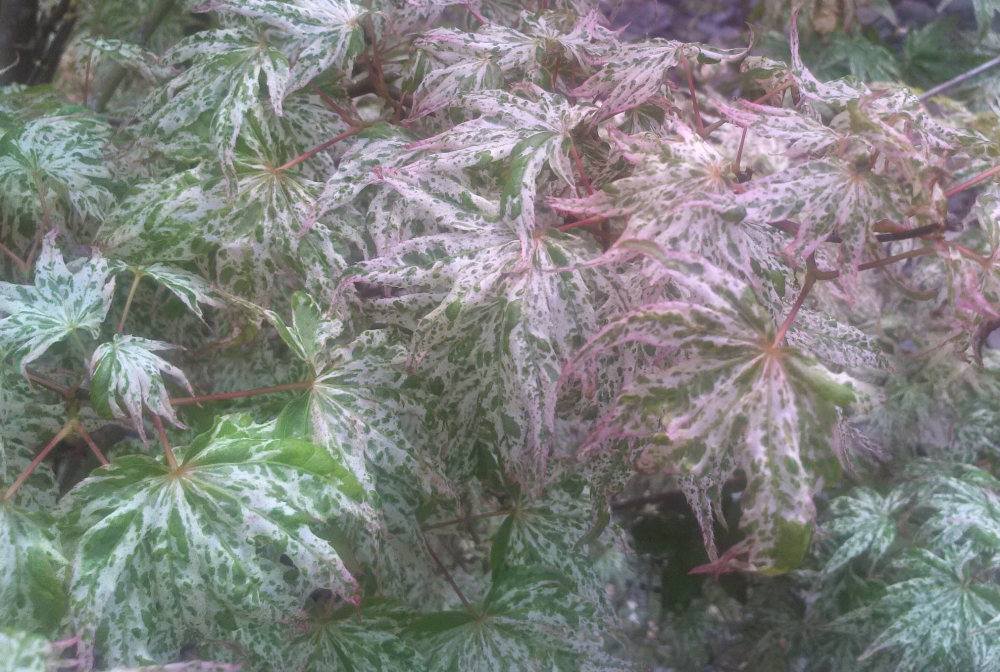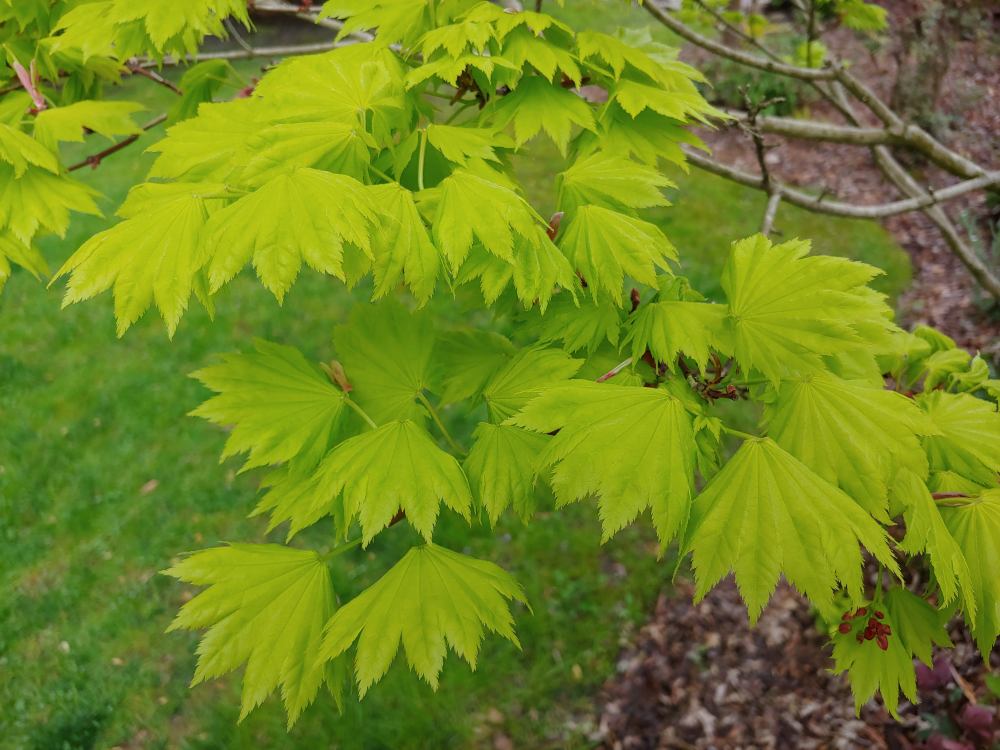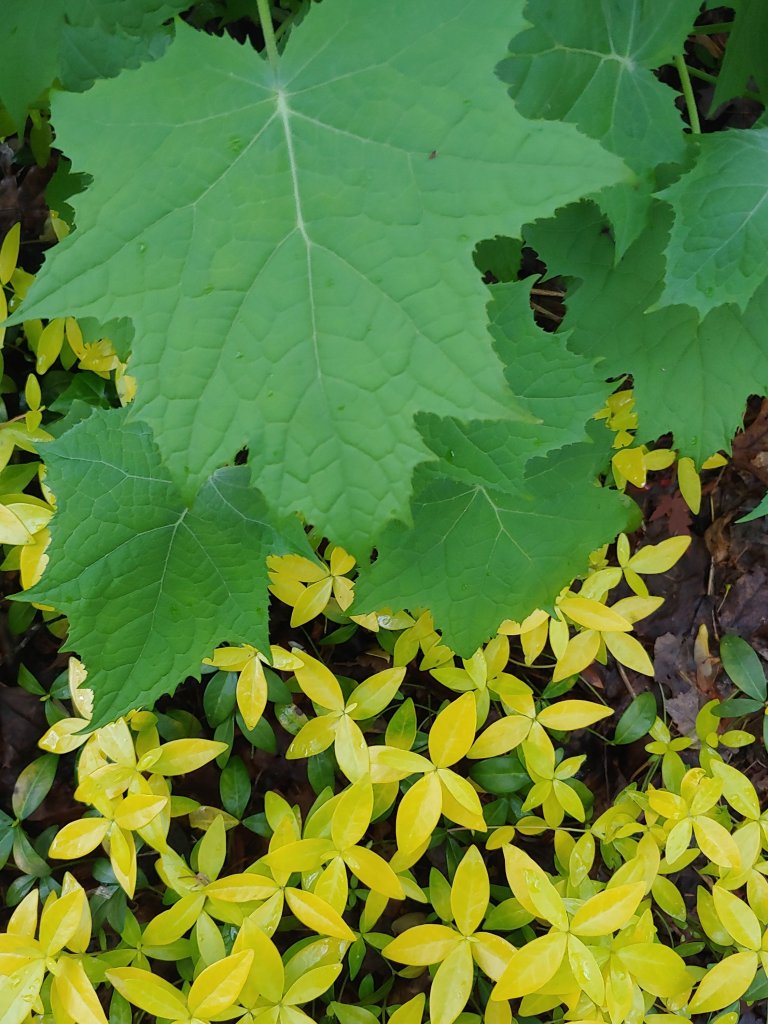Little damage was done by a recent twenty-eight degree night. This followed several nights that flirted with the freezing mark, and fortunately, seldom is damage severe on tender new leaves unless temperatures fall to twenty-five degrees or colder. Two seedling Japanese maples were at the tenderest stage of growth, with leaves just out, and while all leaves appear to have been lost, I am hopeful that stems were not. Carelessly, I did not move them into the greenhouse for the night. Some leaves were lost on the dwarf ‘Shaina’ (below), but it is so bushy that this will hardly be noticed once the brown falls away.

New leaves of ‘Miyasaki’ toad lilies (Tricyrtis hirta ‘Miyazaki’, below) were damaged, but this happens every few years, and a month later the brown leaves are gone with no apparent ill effect. In recent years, mophead hydrangeas (Hydrangea macrophylla) leafed early, then were severely damaged by late freezes. This has resulted in unsatisfactory blooming in consecutive years, but now, while the hydrangeas were nearly fully leafed, the freeze was late enough that leaves were not as tender, and there was no damage.

One of three Floating Cloud Japanese maples (Acer palmatum ‘Ukigumo’, below) grows tall and straight with a short period of morning sun only, while the others in sunnier spots are more shrub-like. None display the remarkable foliage coloring I’ve seen in the cooler northwest states, but the best color is in the shade. Its leaves were just emerging during the periods of cold, but there is no damage.


A Golden Full Moon Japanese maple (Acer shirasawanum ‘Aureum’, below) was planted in what I suspected was too sunny a spot, so I feared that leaves would scorch in the summer. Instead, the location must be just right, and while the bright yellow fades somewhat by late spring, the foliage remains colorful. While leaves were at a vulnerable stage when the freezes hit, they have much more substance than the foliage of other Japanese maples, so no harm was done.



Bit of a freeze here too just South of you. Caperci dwarf JM lost some top leaves yet the green cascade right next to it fared well.
Odd!
Beautiful AS “Aureum” you have there. Thanks for that photo.
I’m now motivated to visit Eastwood’s before it gets hotter to get a few green maples. Unlike you, who is so much more patient than I am, my wee Japanese maples go directly into the ground!
Oh, thank you. I must tell my wife that instead of her mistaken opinion, I am in fact a patient person. I must admit that I held off for years planting Full Moon and Floating Cloud maples until larger ones were found. The Full Moon was left over in a grower’s field in Oregon (a grower no longer in business) because rabbits had damaged its trunk. No problem, and good fortune for me since the chew marks were only superficial and I started with hefty six foot tree for a good price.
I’ve purchased odd Japanese maples in recent years that will mature to less than ten feet to keep in pots since I have no more space for planting trees. In a pot they don’t stand out as being too small in this overgrown garden, and some day, if a hole opens up they’ll be ready. One of two seedling maples that was damaged in the freeze is a seedling with variegated foliage from an Oridono Nishiki that died a year ago. As a one year seedling it appeared it might have better coloring than the usually disappointing parent tree, so I’m hoping that it revives.
Your last frost date must be very late.
Our average last frost date is in mid May, though routinely we disregard this. Last week’s freeze was unusual, but certainly not the latest in recent years. There is one more thirty-seven degree night in the forecast, and hopefully we’ll be done with the cold.
I was just discussing with my colleague down South how some flowers that get such a late start where frost dates are later somehow bloom earlier than they do here. For some, it is because they get more of a chill in winter. For others that get planted new annually, I can not figure it out.